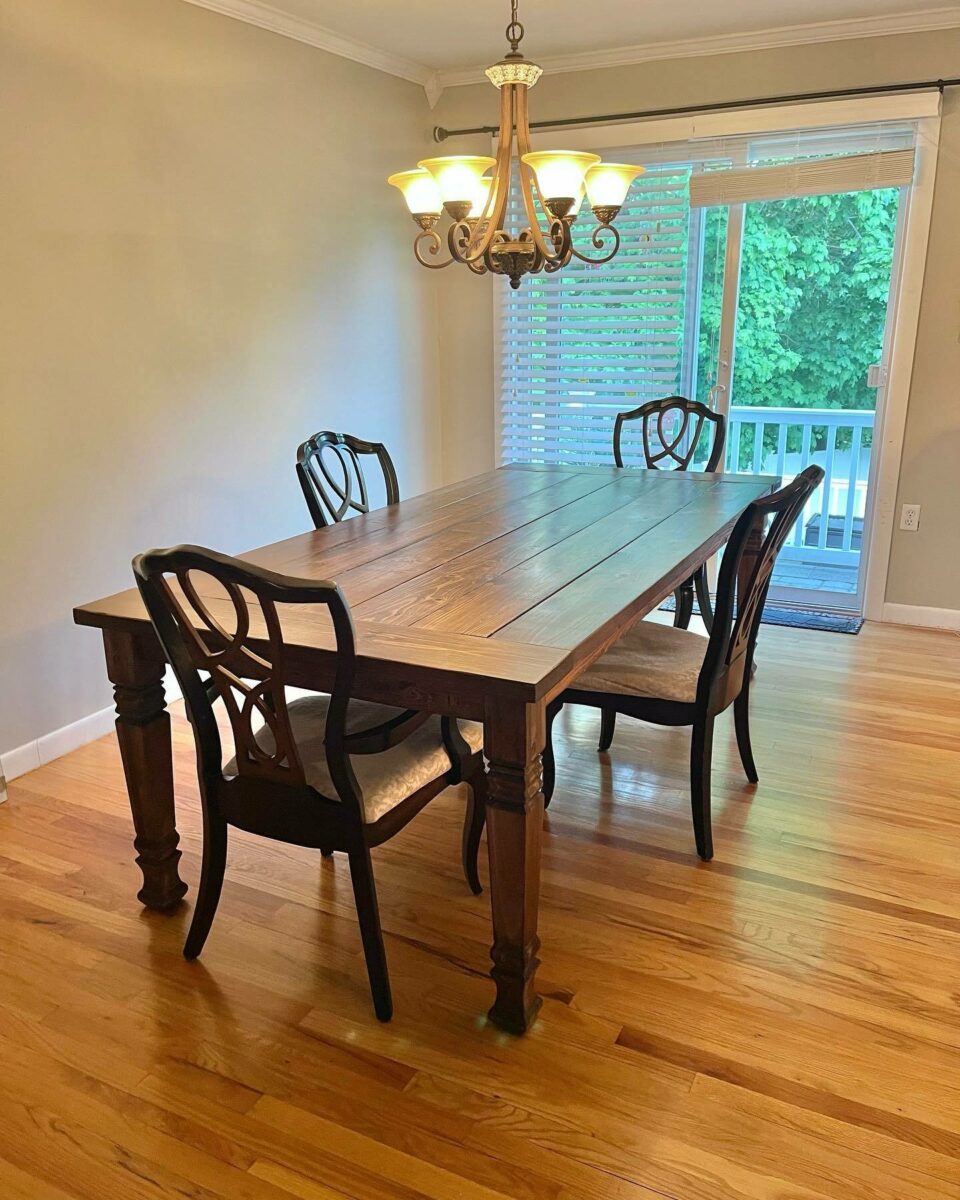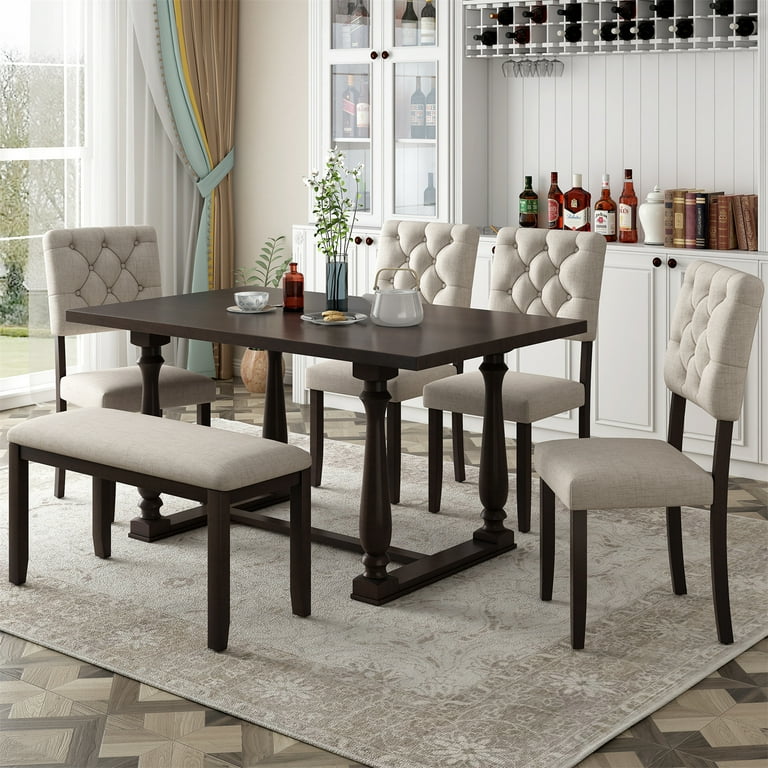The Top Trends in Dining Room Table Legs You Need to Know
Wiki Article
From Standard to Modern: Find the Suitable Dining Area Table Legs for Your Design
The selection of dining-room table legs plays a crucial function in defining the overall personality of your area, connecting the space between conventional workmanship and modern-day looks. While traditional layouts such as cabriole and turned legs evoke a feeling of timeless sophistication, contemporary designs like barrette and geometric options provide a chance for striking aesthetic interest. Assessing the right balance in between these designs needs a nuanced understanding of your existing decoration and individual preference. As you think about these elements, the question continues to be: just how can you perfectly integrate these varied leg designs to develop a harmonious dining experience?Recognizing Table Leg Styles
The selection of dining-room table leg styles can significantly affect both the visual appeals and capability of the area. Each leg style contributes one-of-a-kind practical features and aesthetic aspects, dealing with diverse design choices and usage requirements. Understanding these designs is essential for choosing the right eating table that lines up with your overall interior layout vision.As an example, conical legs offer a tidy, traditional look that can boost a room's sophistication, while pedestal bases provide security and optimize legroom, making them perfect for smaller spaces. Barrette legs, a trademark of mid-century modern-day design, present an industrial style, permitting an airy, open feel. Trestle legs stimulate rustic beauty, supplying robust support and a sense of eternity.
Wood legs can bring heat and texture, whereas steel choices often share a streamlined, modern ambiance. Inevitably, comprehending table leg designs is crucial for producing a natural dining area that shows individual style while making sure practicality and convenience.
Typical Table Leg Options
When selecting dining-room table legs, traditional alternatives usually symbolize ageless style and workmanship. These styles show a rich heritage and a commitment to top quality, making them ideal for those that value timeless aesthetics.One of one of the most famous standard leg styles is the cabriole leg, characterized by its graceful rounded shape. This style frequently includes decorative carvings and is most frequently found in Queen Anne and Chippendale furniture. One more preferred alternative is the turned leg, which boasts a collection of smooth, rounded shapes that provide a classic appearance while keeping stability.
In addition, the straight leg, while basic, provides a basic and durable framework that can mix perfectly with a selection of tabletop styles. For those drawn to ornate describing, claw-and-ball feet legs stimulate a sense of grandeur and can serve as a magnificent focal point in any kind of eating room.
Lastly, pedestal bases, although not purely legs, offer an alternative traditional option that allows for sufficient legroom and can be magnificently carved. Each of these typical leg designs contributes to the general ambiance of a dining-room, marrying feature with visual charm.

Modern Table Leg Designs
Modern table leg layouts provide a varied series of styles that highlight innovative materials and clean lines. These designs often focus on capability while serving as striking prime focus within an eating space. Minimal visual appeals are common, with legs crafted from products such as metal, glass, and crafted timber, which add to a ventilated and modern feeling.One prominent style is the barrette leg, defined by its slim, conical structure that provides stability without overwhelming the tabletop (dining room table legs). This style is typically located in mid-century contemporary furniture and can effortlessly complement different table forms. One more pattern is the usage of geometric forms, where legs may tackle unbalanced or angular forms, adding aesthetic rate of interest and a touch of artistry

Blending Styles for One-of-a-kind Spaces
Typically, home owners look for to develop special eating areas that reflect their personal design by mixing different layout components. This strategy permits the incorporation of varied appearances, causing a harmonious yet distinctive environment. Matching a rustic wooden table with sleek, modern steel legs can develop a distinctive comparison that boosts the space's overall allure.Furthermore, incorporating vintage table legs with modern table tops can evoke a feeling of history while keeping a modern sensibility. Such mixes not only display specific taste but likewise motivate creative thinking, allowing house owners to curate a room that feels both personal and welcoming.
Color plays an essential duty in this blending process; choosing table legs that enhance or contrast with the existing color design can enhance aesthetic rate of interest. Whitewashed legs can soften the boldness of a dark table surface area, developing a well balanced aesthetic.
Tips for Selecting the Right Legs
Choosing the right table legs is vital for accomplishing both performance and aesthetic allure in your eating area. Begin by taking into consideration the general design of your space. Conventional setups profit from legs that feature intricate makings or transformed styles, while modern areas may require smooth, minimal styles.Next, analyze the height and stability of the legs. dining room table legs. Standard look at more info table range in between 28 to 30 inches in elevation, so make sure the legs enhance this dimension for convenience. In addition, robust materials, such as hardwood or metal, can enhance stability and long life
Assess the leg shape also-- choices consist of right, tapered, or stand layouts. Straight legs offer a timeless appearance, while tapered legs can include a touch of elegance. Pedestal bases give enough legroom and are excellent for smaller sized areas.
Conclusion
In summary, selecting the ideal dining area table legs calls for cautious consideration of both typical and modern designs. By balancing Related Site leg style, elevation, and product with the general design, a cohesive and welcoming environment can be attained.The variety of dining space table leg styles can substantially influence both the appearances and functionality of the space. Inevitably, understanding table leg styles is important for creating a cohesive eating location that mirrors personal style while making certain practicality and convenience.One of the most famous standard leg designs is the cabriole leg, identified by its elegant curved form. Straight legs offer a traditional appearance, while tapered legs can add a touch of sophistication.In summary, choosing the excellent eating space table legs requires careful factor Discover More Here to consider of both traditional and contemporary designs.
Report this wiki page